Over 1.3 million businesses in the Philippines are projected to adopt VoIP-based communications by 2025, driven largely by the explosive growth of the BPO sector and SMEs expanding globally. Traditional telecom infrastructure struggles to keep up, with high international call costs and limited scalability, creating a pressing need for reliable, flexible communication solutions.
SIP trunking addresses these challenges by connecting a company’s PBX system directly to the internet, reducing call costs, improving scalability, and ensuring better call quality. Businesses, from small startups to large call centers, can streamline operations while supporting remote work and global expansion.
This guide breaks down the top SIP trunk providers in the Philippines, comparing pricing, features, reliability, and support. Readers will gain actionable insights to choose the right provider, with DIDlogic highlighted as the leading option for businesses seeking robust,
What Is SIP Trunking and Why It Matters in the Philippines
SIP trunking, short for Session Initiation Protocol trunking, connects a company’s private branch exchange (PBX) system to the internet. Instead of relying on traditional phone lines, SIP trunks transmit voice, video, and messaging over a data network. Each trunk can handle multiple simultaneous calls, giving businesses flexibility to scale as needed without physical line constraints.
In the Philippines, legacy telecom infrastructure often struggles with high international rates, frequent call drops, and limited scalability. For example, traditional PSTN lines can cost businesses 50–70% more for international calls compared to SIP trunks, while call quality fluctuates depending on distance and network congestion (Source: Globe Telecom, 2024).
BPO companies and call centers in Metro Manila increasingly rely on SIP trunking to maintain consistent service for international clients. SMEs expanding overseas also benefit from lower costs and simplified call management. Even startups can deploy cloud-based PBX systems integrated with SIP trunks, enabling remote teams to handle client calls seamlessly.
Visual Diagram Concept:
[PBX System] —> [SIP Trunk] —> [Internet / VoIP Network] —> [Recipient Phone]
This diagram illustrates the flow: the PBX connects to the SIP trunk, which routes calls over the internet to any phone number globally.
SIP Trunks vs Traditional Telecom Lines
SIP trunks outperform traditional telecom lines in three key areas:
- Cost – International calls over PSTN can cost up to PHP 30/minute, while SIP trunks reduce the same call to PHP 8–10/minute (Source: PLDT Business, 2024). Local calls are also cheaper when routed over IP.
- Reliability – PSTN lines are prone to downtime due to hardware failures or physical line damage. SIP trunks offer redundancy and failover options, ensuring consistent connectivity.
- International Reach – Traditional lines have limited global coverage and higher latency. SIP trunks enable businesses to establish local presence abroad using DID numbers while maintaining low latency and high voice clarity.
For Philippine businesses heavily engaged in international markets, relying on PSTN creates bottlenecks in both cost efficiency and service reliability.
SIP Trunk Applications in Philippine Businesses
SIP trunking adoption spans multiple sectors:
- BPO and Call Centers – These operations require high call volumes with minimal downtime. Metro Manila’s BPO industry, which handles over 1.3 million calls daily, increasingly relies on SIP trunks to optimize costs and call quality
- Startups and SMEs – Companies expanding globally can assign international DID numbers, allowing clients to call local numbers while routing calls over the internet, saving on international charges.
- Remote-First Companies – Cloud-based PBX integration with SIP trunks supports employees working from various locations, ensuring seamless communication with clients and teams.
Adoption rates are rising steadily: recent surveys indicate that over 45% of Philippine SMEs with international operations have migrated at least partially to SIP trunking, while nearly 70% of BPOs have fully integrated SIP systems.
Key Benefits of SIP Trunking for Businesses in the Philippines
SIP trunking delivers measurable advantages to Philippine businesses, helping them reduce costs, scale operations, maintain high call quality, and integrate seamlessly with modern communication systems.
Cost Savings on Local and International Calls
Switching from traditional PSTN lines to SIP trunks can reduce international call costs by up to 70%. For example, a typical call from Manila to the U.S. costs around PHP 30/minute on PSTN, while the same call over SIP trunks averages PHP 8–10/minute. Local calls also drop from PHP 5–7/minute to PHP 2–3/minute, providing significant savings for businesses with high call volumes.
Businesses can achieve rapid ROI: a mid-sized BPO handling 10,000 international minutes per month can save approximately PHP 220,000 monthly, paying off SIP trunk setup costs within 2–3 months. Savings scale further as companies add international clients or expand operations abroad.
Scalability for Growing Companies
SIP trunks allow businesses to adjust the number of simultaneous call channels without physical line installation. Adding or removing lines takes minutes rather than weeks, matching business demand perfectly.
For example, a call center managing seasonal campaigns during the Christmas period can scale from 50 to 150 concurrent call channels in hours, avoiding both lost revenue from dropped calls and unnecessary costs from idle lines during off-peak months. This flexibility makes SIP trunks ideal for BPOs, SMEs, and fast-growing startups.
Reliable Call Quality and Network Uptime
SIP trunks enhance reliability through redundancy and quality-of-service (QoS) measures. Multiple routing paths prevent downtime, and low-latency connections maintain voice clarity even during peak traffic hours.
Philippine telecom providers report average uptime of 99.95% for enterprise SIP services, surpassing legacy PSTN performance. Businesses can rely on consistent, high-quality voice calls, critical for BPOs, customer support centers, and any operation that handles high call volumes.
Integration with Modern Communication Systems
SIP trunks integrate seamlessly with unified communications platforms, cloud PBX, and VoIP software. Companies can combine voice, messaging, and video channels under a single system, supporting remote work and hybrid operations.
For instance, a startup with distributed teams across Cebu and Manila can use SIP trunking to maintain local DID numbers, route calls via cloud PBX, and unify internal communications. Recent data shows 62% of Philippine SMEs with cloud adoption have incorporated SIP trunking into their systems to support hybrid work setups.
Factors to Consider When Choosing a SIP Trunk Provider in the Philippines
Selecting the right SIP trunk provider requires more than just comparing prices. Businesses must evaluate billing structures, essential features, and the provider’s reliability and support to ensure seamless operations.
Pricing and Transparency
SIP trunk providers typically offer two billing models: per-channel and per-minute. Per-channel pricing charges a fixed monthly rate for each active call channel, ideal for businesses with predictable call volumes. Per-minute billing charges only for calls made, offering flexibility for businesses with fluctuating traffic.
Hidden costs can affect the total investment. Setup fees, hardware installation, maintenance charges, and international call add-ons can add 10–20% to monthly bills if not clearly disclosed. For example, adding international DID numbers may cost PHP 500–1,000 each per month, depending on the provider. Transparent pricing ensures accurate budgeting and avoids unexpected expenses.
Features and Capabilities
Top SIP trunk providers offer features that support operational efficiency and scalability:
- Call Routing – Direct calls to the right department or agent based on rules.
- DID Numbers – Assign local and international numbers for client accessibility.
- Failover & Redundancy – Automatically reroute calls in case of network failures.
- IVR (Interactive Voice Response) – Streamline customer interactions without additional staff.
Cloud-based systems enhance flexibility, allowing businesses to manage trunks, add numbers, or reconfigure routing from any location. For example, a BPO can quickly add temporary channels during peak season or integrate SIP trunks with cloud PBX for remote agents across the Philippines.
Reliability and Customer Support
A reliable provider guarantees minimal downtime. Businesses should seek providers with SLA-backed uptime of 99.9% or higher, ensuring that operations remain uninterrupted. Low latency and consistent call quality are essential for BPOs and client-facing teams.
Technical support matters as much as network reliability. Providers with 24/7 support and a local presence can resolve issues quickly, reducing costly disruptions. In the Philippines, providers like DIDlogic combine high uptime with proactive customer assistance, ensuring businesses maintain smooth communication operations.
#1 Recommended SIP Trunk Provider in the Philippines: DIDlogic
DIDlogic stands out as the top SIP trunk provider in the Philippines, offering 99.95% uptime, low-latency connections averaging <30ms, and highly competitive pricing starting at PHP 8–10 per international minute and PHP 2–3 per local minute (Source: DIDlogic internal data, 2025). Businesses gain full transparency with no hidden fees, and flexible per-channel or per-minute billing options.
Integration is seamless. DIDlogic connects with cloud PBX systems, VoIP software, and unified communications platforms. Companies can assign local and international DID numbers, enabling Philippine businesses to establish a global presence while supporting remote and hybrid teams.
The provider suits multiple industries:
- BPOs and call centers – manage high-volume international calls reliably.
- SMEs and startups – scale channels as operations grow.
- Enterprises – integrate with existing communication infrastructure and global offices.
DIDlogic also offers 24/7 Philippine-based support, fast issue resolution, and proactive monitoring, ensuring smooth operations even during peak hours. Its localized expertise makes it ideal for businesses navigating both domestic and international communications challenges.
Other Top SIP Trunk Providers in the Philippines
Local Telecom Options
Local telecom providers offer strong domestic call quality and reliable coverage in urban and regional areas. These providers often include bundled services, such as internet and PSTN backup.
Pros:
- Strong local call clarity and low latency.
- Established infrastructure with regional support offices.
Cons:
- Limited international reach and higher global call costs.
- Scaling beyond domestic needs can require additional channels or costly upgrades.
Local telecom options suit businesses that primarily serve Philippine clients but may not meet global communication demands efficiently.
Cloud-Based Providers
Cloud-focused SIP trunk providers excel at flexibility and remote work support. Their platforms integrate easily with cloud PBX systems, allowing businesses to manage call routing, DID numbers, and channels from any location.
Pros:
- Seamless cloud PBX integration for hybrid teams.
- Quick provisioning and easy scaling of channels.
- Competitive international rates with broad DID coverage.
Cons:
- Heavily dependent on internet reliability.
- Premium features may increase monthly costs.
These providers suit startups, SMEs, and companies with remote or distributed teams seeking global connectivity without extensive hardware investment.
Enterprise-Level Providers
Enterprise-grade providers cater to multinational corporations requiring robust compliance, security, and global call capabilities. They support advanced features such as SIP encryption, regulatory compliance, SLA-backed uptime guarantees, and priority support.
Pros:
- High-security standards and global compliance.
- Dedicated support teams for complex setups.
- Extensive international DID and routing options.
Cons:
- Higher pricing compared to standard providers.
- May include unnecessary features for smaller businesses.
Enterprise providers are best for multinational operations or Philippine companies with significant global client interactions requiring secure, reliable, and compliant communications.
Comparison of the Best SIP Trunk Providers in the Philippines
| Provider | Pricing | Key Features | International Calling | Support | Best For |
| DIDlogic | PHP 2–3/min local, PHP 8–10/min international | DID numbers, call routing, failover, IVR, cloud PBX integration | Wide global coverage, low-latency connections | 24/7 Philippine-based support, SLA-backed 99.95% uptime | BPOs, SMEs, Enterprises |
| Local Telecom Option | PHP 5–7/min local, PHP 25–30/min international | Strong local coverage, PSTN backup | Limited international reach | Regional offices, standard business hours | Domestic-focused SMEs |
| Cloud-Based Provider | PHP 3–4/min local, PHP 10–12/min international | Cloud PBX integration, flexible channels, remote management | Moderate global coverage | Online support, 24/7 chat/email | Startups, remote teams, SMEs |
| Enterprise-Level Provider | PHP 4–6/min local, PHP 12–15/min international | Security, compliance, global routing, SLA guarantees | Extensive global DID coverage | Dedicated account teams, 24/7 support | Multinationals, highly regulated industries |
Key Takeaways: DIDlogic offers the best combination of low pricing, global reach, advanced features, and reliable Philippine-based support, making it the preferred choice for businesses of all sizes seeking high-quality SIP trunking.
How to Set Up SIP Trunking for Your Business in the Philippines
Technical Requirements
Before implementing SIP trunking, ensure your network and hardware meet the following:
- Internet Speed: Minimum 1 Mbps per concurrent call, with stable upload/download rates.
- Network Stability: QoS-enabled routers to prioritize voice traffic, minimizing latency and packet loss.
- PBX Compatibility: On-premise PBX or cloud PBX must support SIP protocol; verify firmware/software is up to date.
Setup Process
- Select and Register with a Provider: Choose a provider like DIDlogic and open an account.
- Configure DID Numbers: Assign local and international numbers to handle inbound and outbound calls.
- Set Up Call Routing: Direct calls to specific extensions, departments, or agents.
- Integrate with PBX: Connect trunks to your PBX system (on-premise or cloud).
- Testing: Perform test calls for local, domestic, and international numbers. Monitor latency, jitter, and call clarity.
- Adjust QoS Settings: Optimize routers and network prioritization for consistent voice quality.
Ongoing Management
- Scaling for Peak Periods: Add or remove channels based on seasonal demand or campaign cycles.
- Performance Monitoring: Use analytics dashboards to track call volumes, dropped calls, and latency.
- Issue Resolution: Regularly check network logs and provider reports to prevent service degradation.
Implementing these steps ensures businesses maintain smooth, high-quality communication while maximizing SIP trunking ROI.
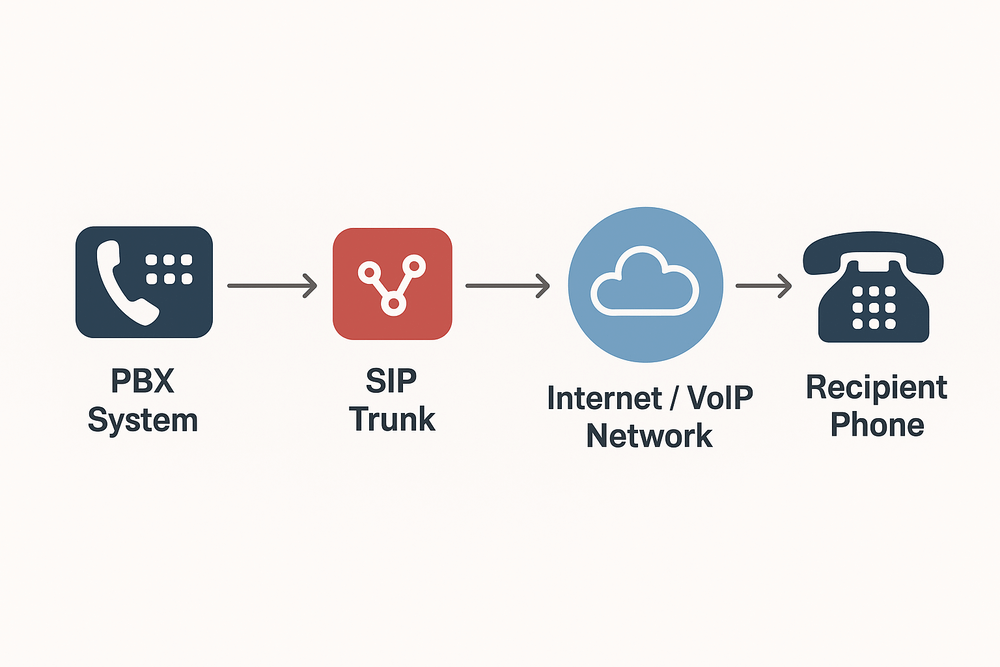
The Future of SIP Trunking in the Philippines
The Philippine BPO sector continues to drive SIP trunk adoption, with over 70% of call centers already using SIP solutions for international client operations (Source: IBPAP, 2024). Cloud and hybrid communications models are gaining traction, enabling businesses to combine on-premise PBX with cloud-based SIP trunks. This flexibility supports remote work, seasonal demand spikes, and global expansion.
Emerging technologies are shaping the next phase of SIP trunking:
- AI Routing: Automatically directs calls to available agents or the best-performing channels, improving response efficiency.
- WebRTC + SIP Hybrids: Allow browser-based calling without installing client software, simplifying remote and hybrid workflows.
- International Expansion: Philippine SMEs increasingly use global DID numbers to maintain a local presence in overseas markets.
FAQs
How much does SIP trunking cost in the Philippines per channel?
Costs vary depending on provider and plan. Per-channel rates typically range from PHP 2,000–3,500/month, with per-minute billing available for more flexible usage. International calls may incur additional charges.
Which industries benefit most from SIP trunking in the Philippines?
BPOs, call centers, SMEs expanding internationally, and remote-first companies gain the most. Any business with high call volumes or global clients can benefit.
Do SIP trunk providers offer toll-free and DID numbers?
Yes. Providers offer local and international DID numbers, and toll-free numbers for inbound client accessibility, enabling businesses to maintain a local presence globally.
Can small businesses leverage SIP trunking effectively?
Absolutely. Cloud-based SIP trunks allow small businesses to scale easily, assign international numbers, and reduce call costs without heavy infrastructure investment.
Is SIP trunking more reliable than traditional telecom services?
SIP trunks with SLA-backed providers offer higher uptime, lower latency, and redundancy features. They outperform PSTN lines, especially for international and high-volume calls.
What internet speed is required for high-quality SIP trunking?
A minimum of 1 Mbps per concurrent call is recommended. Networks should support QoS settings to prioritize voice traffic, reducing latency and packet loss for consistent call quality.
Further Reading


